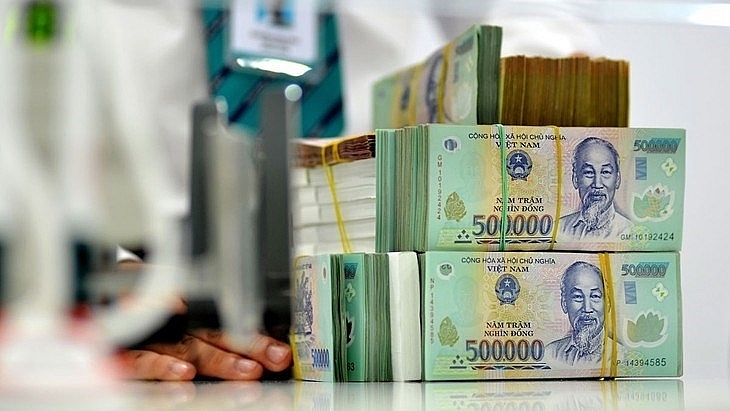 |
| Allocating recurrent expenditure must ensure the principle of thrift practice and combating waste. Source: Internet |
Five requirements, nine key task groups
Speaking on some important contents of the Government’s Master Plan on thrift practice and waste prevention in the 2021 – 2025 period, the Ministry of Finance said the master plan identifies the goal is to thoroughly save money and prevent waste in all fields, contribute to mobilizing, allocating and effectively using resources for pandemic prevention, ensuring socio-economic development, national defense and security, strive to fulfill the targets of the Resolution of the 13th National Congress of the Party.
In order to ensure the effective implementation of thrift practice and waste prevention in the 2021-2025 period, the plan sets out five requirements, in which emphasizing thrift practice and waste prevention must stick to the policies and orientations in the Resolutions of the Party and the National Assembly, especially in association with the implementation of six key tasks, three strategic breakthroughs and 12 solutions in the Resolution of the 13th Party Congress; strive to complete the main targets in the 5-year socio-economic development plan for 2021-2025.
Defining thrift practice and waste prevention is one of the key tasks associated with upholding the responsibility of the head; ensuring specific assignment, decentralization, clear information for implementation. Thrift practice and waste prevention must be associated with strengthening inspection, examination, auditing and supervision, promoting administrative reform, reorganizing the political system’s apparatus, and preventing corruption and negativity.
In terms of key tasks, the plan offers nine groups of tasks in various fields, including state budget management; public debt management; management and use of public investment capital; management and use of public property; natural resource management; management of state capital in enterprises; organizational arrangement, apparatus; accelerate national digital transformation; raising awareness, strengthening communication, dissemination, inspection and examination of thrift practice and waste prevention.
Furthermore, the content of restructuring the State budget is emphasized, tightening financial and budgetary discipline; strengthening management, speeding up the implementation and disbursement of public investment capital to contribute to economic growth.
Basic targets in eight groups
The plan sets out a number of savings targets in eight groups of fields, including management and use of recurrent expenditures of the state budget; management and use of public investment capital; national target program management; management and use of public property; management, exploitation and use of natural resources; managing the extra budget of State financial fund; management and use of state capital and assets in enterprises; and labor management.
Additionally, a number of key targets have been set out by the Government, accordingly, to thoroughly save the recurrent expenditures of the state budget (excluding wages and salaries) to give priority to increasing expenditure for development investment, towards the goal of gradually reducing the proportion of recurrent expenditures in the total state budget expenditure, ensuring that the proportion of recurrent expenditures is about 62-63% of the total state budget expenditures, striving to reduce the proportion of recurrent expenditures to about 60%.
Reviewing spending tasks that are not urgent; minimize the addition of the state budget beyond the estimate, organize festivals, conferences, seminars, public holidays, go on business trips abroad, etc., reserve resources for pandemic prevention and overcoming consequences, natural disasters, and climate change, implement the tasks of spending on social security, ensuring security, national defense and reforming salary and social insurance policies following the spirit of Resolution No. 27-NQ/TW and Resolution No. 28- NQ/TW of the 12th Central Executive Committee.
At the same time, resolutely overcome the situation of spreading, wasteful and inefficient investment; cutting projects that are not necessary and urgent; controlling the number of newly started projects, ensuring that each newly started project must have a specific explanation of the necessity, investment efficiency and compliance with legal regulations.
Central budget capital shall not be allocated for local start-up projects of group C, unless approved by the Prime Minister. Reducing the total number of public investment projects from the central budget of the whole country in the 2021 – 2025 period to less than 5,000 in order to focus on key investment.
The plan also identifies the organization on reviewing and rearranging public assets, especially for housing and land facilities, to ensure that they are used for the right purposes, standards and norms following the prescribed regime and complying with requirements and tasks, towards the goal of completing the rearrangement and handling of state-owned housing and land by 2025 across the whole country.
Along with that, complete the management, use and exploitation mechanisms for infrastructure assets in accordance with the Law on Management and Use of Public Property and relevant specialized laws. Also, taking as a basis for effective exploitation of financial resources from these assets. Strengthening the management of the procurement of public assets, limit the purchase of public cars and expensive equipment.
Another target is to continue promoting the restructuring of state-owned enterprises (SOEs) following the orientations set out in the Party’s resolutions and conclusions and the State’s mechanisms, policies and laws; to reduce the number of SOEs in the economy, focus state investment resources on important state-owned enterprises.
Focusing on completing the objectives of equitization and divestment of state capital in accordance with the roadmap and provisions of the law, ensuring the principles and market mechanism; transparency and disclosure of information.
Reviewing and handling the shortcomings and weaknesses of SOEs, ensure the target by 2025, completing the rearrangement of the SOE block; basically completing the settlement of the weaknesses and losses of state corporations.
